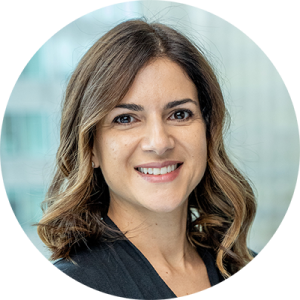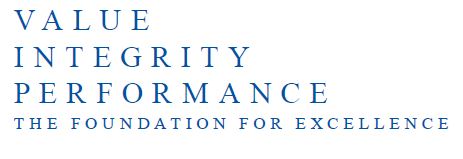July 31, 2025 |
Covered call ETFs have gained significant popularity in recent years, particularly among investors seeking higher levels of yield. While covered call writing can be an effective tool under the right circumstances, many strategies require investors to make a costly trade-off between high monthly distributions and total return. To make informed choices, it’s essential for investors to understand how covered call strategies generate income, when these strategies are most effective, and why total return—not just distributions of income and capital —should guide investment decisions.
Understanding the Covered Call Trade-OffCovered call strategies involve selling call options on a portfolio of stocks to generate income. The premiums collected from selling call options can supplement dividends, allowing the fund to pay out higher distributions than a traditional long-only equity strategy. It is important to understand, however, that covered call strategies do not create returns out of thin air. By selling call options, you give up some of the upside potential in exchange for immediate option income. This trade-off can be beneficial in certain market conditions but detrimental in others. Covered call strategies tend to perform well in periods of moderate to high market volatility. In such environments, option premiums are elevated, and the income generated can enhance risk-adjusted returns. These strategies also tend to perform well in flat or range-bound markets, where the opportunity cost of capping upside is minimal. Conversely, in low-volatility bull markets, covered call strategies often underperform. When markets are steadily rising, the upside cap imposed by the call options can significantly limit gains, making the strategy less attractive on an absolute return basis. One of the most common misconceptions among investors is that higher option premiums automatically translate into better income outcomes. While writing options on a higher percentage of the portfolio or closer to the money can generate more option premium, it also reduces the portfolio’s ability to participate in market gains and will lead to lower total returns over time. Why Distribution Yield Alone Can Be MisleadingMany investors focus on the yield of a covered call fund without considering the total return of the strategy. While a high yield may seem attractive, it doesn’t necessarily mean the strategy is performing well overall. If a fund pays more in distributions than it earns through income and capital gains, it will erode investors’ capital over time, resulting in a lower total return than could otherwise be realized from investing in the same securities directly. Total return measures the full investment outcome, including both the price return and any income received from the investment. It is this figure that ultimately drives long-term wealth creation. Focusing on the total return of a strategy, rather than just distribution yield, can help you evaluate and compare performance accurately, and avoid potential yield traps where high yields mask poor price performance or unsustainable payouts. Real World Example: QYLDTo illustrate this point, consider the case of QYLD, a U.S.-listed ETF that writes at-the-money calls on the NASDAQ-100 index across 100% of its portfolio. QYLD has a current distribution yield of approximately 12% but since its inception in 2013, QYLD has delivered an annualized total return of only 7.6%.1 This discrepancy highlights that the fund is paying out more than it earns in total return. While QYLD’s headline yield is very attractive, investors should also consider that on a total return basis, QYLD lagged the underlying NASDAQ-100 index by approximately 11% per year on average since December 11, 2013,1 underscoring the long-term cost of over-distributing under the guise of earned covered call premiums. In this example, the total cumulative return would have been 499 percentage points higher just holding the index without covered call writing and the high distribution approach of QYLD. |
|
|
Active vs Passive: Why Strategy Selection MattersCovered call ETFs vary in how they are managed. Passive strategies typically write calls on a fixed percentage of the portfolio, either at-the-money or out-of-the money. These approaches may be able to generate high premiums, but they lack flexibility. They cannot respond to changing market conditions or capture upside effectively in bull market rallies. By contrast, active covered call strategies adjust both the strike price and the portion of the portfolio overwritten based on market volatility, sector trends, and macro developments. This provides the opportunity for better downside protection and a more thoughtful balance between covered call income generation and capital growth. Active strategies require expertise and they are time consuming, which makes them difficult for retail investors to replicate on their own. Brompton’s Tactical ApproachAt Brompton, we recognize the importance of adapting our covered call strategy to the prevailing market environment. Our funds employ a tactical approach to option writing, typically selling calls that are 3% to 10% out of the money. We believe this range strikes a balance between generating covered call income and preserving upside potential. During periods of elevated volatility, we increase our overwrite levels to take advantage of higher premiums and to reduce portfolio volatility. In contrast, during low-volatility bull markets, we scale back our option writing to allow for greater participation in market gains. This flexibility enables us to optimize returns while maintaining a consistent and sustainable income stream. Options for Yield-Seeking InvestorsBrompton’s equity covered call ETFs target attractive and sustainable levels of income with the goal of maximizing total return, through active portfolio management and active call writing. Additionally, Brompton’s Split Corp. Class A shares are designed with built-in leverage for enhanced growth potential which, in addition to an active call writing program, can supplement cash flow paid to investors. These funds have proven track records of delivering high yields and attractive long-term total returns, with many split share funds dating back almost 20 years. |

Michelle Tiraborelli
Head of CEFs
Michelle Tiraborelli has 19 years experience in the financial industry and is Senior Vice President and Head of Closed-End Funds at Brompton Group. Prior to joining Brompton in 2010, Ms. Tiraborelli was an Investment Advisor with BMO Nesbitt Burns. She holds a Bachelor of Science (Honours) degree from Queen’s University and an MBA from the Hong Kong University of Science & Technology.








